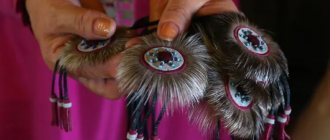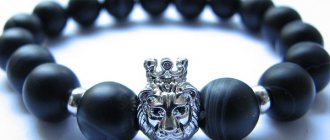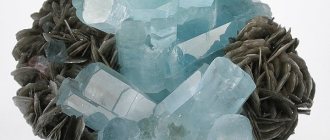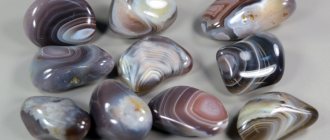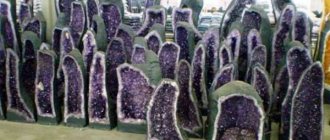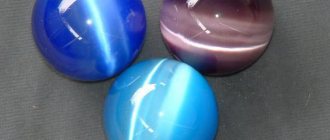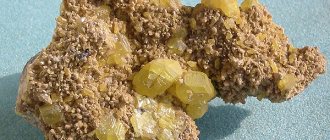Having a natural green color, olivine looks like an emerald. But unlike it, the stone costs an order of magnitude cheaper. At the same time, it has a bright shine and high refractive indexes of light. For this reason, the mineral is very popular among jewelry lovers around the world. In addition to the green tint, olivine has lemon and honey tones. You will learn more about the precious gem, its less expensive varieties and their features by reading this article.
Olivine deposits
— Advertising —
The first deposits of olivine were discovered on St. John's Island (Red Sea) in the 4th millennium BC. Today, these deposits are almost completely depleted and exhausted.
The largest modern deposits of olivine were found in the United States, in Arizona and New Mexico. It is also found in countries such as Brazil, Australia, Kenya, Norway, Mexico, Hawaii, Egypt and Russia. Colorless crystals are mined on the island of Sri Lanka. Indian high quality olivine is also known as Kashmir Peridot. Large samples, weighing about 200 carats, are mined in Myanmar.
Origin
Olivine originated in volcanic rocks under the influence of magma and its high temperature. The main rock containing it is called dunite. Some varieties of crystals (diamond companions) are found in kimberlite pipes.
Deposits and production
The main deposits of olivine in Russia are the Ural Mountains. Taimyr, Buryatia, Yakutia, Amur and Murmansk regions, Krasnoyarsk Territory are also mining sites in our country. Outside its borders, the mineral is found in Sri Lanka, Hawaii, the Canary Islands, India, Mexico, Kenya, Brazil, Pakistan, and the USA.
Helpful information
Egyptian mines were discovered several thousand years ago. Legends say that Cleopatra herself loved jewelry with green gems. Unfortunately, the deposits near the Red Sea are completely exhausted by the 21st century.
History of olivine
The name of the mineral olivine is associated with the similarity of its color to the color of the fruits of olive trees.
It was invented by the French mineralogist Alfred Werner. In those days, the gem was considered a subspecies of chrysolite, but then everything changed, and according to modern ideas, chrysolites are a light variety of olivine. There is a mineral under another name “peridot”. Olivine has been known to mankind relatively recently, but has become widespread in the manufacture of amulets and amulets as a mineral with strong magical properties.
Historical feature of the stone
Very ancient stone
Historians have found that the magical properties of olivine have been used by humans for more than 6,000 years. Beads of this gem were worn by the ancient Egyptians. According to the Bible, chips from it decorated the clothes of the Jewish high priests. Some researchers believe that the legendary emerald through which the Roman Emperor Nero watched the burning capital was olivine. According to legend, peridot (a precious variety of olivine) was the favorite stone of Queen Cleopatra.
In the Middle Ages, European knights brought stone from the Crusades. There was an opinion that it restores and increases male strength.
Olivine crystals decorate the frames of Christian icons. One of the most famous is the icon of Andrei Rublev “Holy Trinity”, kept in Sergiev Posad. This gem adorns the crown of the Russian Empire, along with other precious and semi-precious stones.
Soviet writer A.N. Tolstoy wrote about him in his novel “Engineer Garin’s Hyperboloid”. His book reflected the opinion of geologists of the 20s of the last century about the Olivine Belt, seething at a depth of several tens of kilometers, consisting of molten minerals, among which olivine and gold predominate.
Physicochemical characteristics of olivine
— Advertising —
By chemical nature, olivine is an orthosilicate of magnesium and iron. Its crystals of prismatic or pyramidal shape are rare; granular masses are more common. Olivines are very fragile. Hardness on the Mohs scale 6.5-7. Density 3.27-3.37 g/cm3. The surface of the stone is easy to scratch, and sulfuric acid completely destroys it with the formation of a gelatinous mass.
There are both colorless specimens and black, yellowish-green, olive and bottle green. They have a glassy luster and rhombic structure. There is no cleavage.
The characteristic distinguishing features of olivine are its non-metallic luster, olive-green color, and content in dark rocks of igneous origin. When olivine breaks down, serpentine (serpentine) is formed.
Types of olivine
The most valuable subspecies of olivine, which is widely used in jewelry, is chrysolite. The color of its transparent crystals varies from yellow-green to emerald green and dark olive. There are also pistachio and yellow specimens. It all depends on the content of impurities in each specific sample.
— Advertising —
Another variety of olivine is the mineral Hawaiiite, which is a pale green, low-iron olivine that is mined from lava in the Hawaiian Islands.
Silicates of the olivine group also include forsterites, fayalites, knebelites, and tephroites.
The magical properties of olivine
Olivine is the patron saint of both strong-willed and weak people.
It protects from unpleasant situations and leads its owner onto the path of good luck and success, while showing him the right, correct path. Since ancient times, the gem has been considered a source of secret knowledge, thanks to which its owner can successfully implement all his ideas, even those that had previously led to failure.
For people who desire to gain fame and fortune, olivine will also be a good helper. Along with fame and money, the stone will also give the owner morality and wisdom, the ability to achieve what he wants by following an honest path.
Olivine also helps in family problems. It strengthens family ties, eliminates conflicts, quarrels, and protects the home from the envy and anger of others. It is also believed that it prevents fires.
Olivine saves those who are inclined to take risks without thinking about their actions for a long time. At the same time, a person begins to avoid rash actions and gains wisdom.
Medicinal properties of olivine
The range of healing properties of olivine is very wide and includes the following areas:
- normalization of the nervous system;
- treatment of heart and vascular diseases;
- gynecological diseases, as well as childbirth - to relieve pain and ease contractions;
- in case of metabolic disorders to stabilize it;
- for healing wounds quickly;
- to enhance male potency;
- for headaches and migraines;
- to normalize sleep and get rid of nightmares;
- after strokes for faster recovery;
- to stabilize the condition of patients with multiple sclerosis;
- to normalize a person’s psychological state, reduce anger, aggression, jealousy, indignation, hysteria.
Olivine is very popular in the treatment of vision. To do this, they look at the mineral for a long time and their vision becomes better.
It is recommended for newborns to hang an olivine amulet around their neck to protect them from illness and negative energy.
In folk medicine, it is advised to place the mineral next to the diseased organ for a while.
Olivine, which is used for medicinal purposes, is important to regularly cleanse of the negative energy that it absorbs along with diseases.
Uses
There is a worldwide search for cheap ways to fix CO2 through mineral reactions called enhanced weathering. Removal by reaction with olivine is an attractive option because it is widely available and readily reacts with (acidic) CO 2 from the atmosphere. When olivine is ground, it is completely weathered within a few years, depending on the grain size. All the CO 2 produced by burning one liter of oil can be absorbed by less than one liter of olivine. The reaction is exothermic, but slow. To recover the heat generated by the reaction to produce electricity, a large volume of olivine must be well thermally insulated. The end products of the reaction are silicon dioxide, magnesium carbonate and small amounts of iron oxide. The non-profit Project Vesta is studying this approach on beaches that increase wave action and the surface area of crushed olivine through wave action.
Olivine is used as a dolomite substitute in metallurgical plants. Olivine is also used for tapping in blast furnaces in the steel industry, acting as a plug that is removed each time steel is melted.
In the aluminum foundry industry, olivine sand is used to cast aluminum objects. Olivine sand requires less water than quartz sand but still holds its shape during metal working and pouring. Less water means less gas (steam) escaping from the mold when the metal is poured into the mold.
In Finland, olivine is promoted as an ideal stone for sauna stoves due to its comparatively high density and resistance to weathering under repeated heating and cooling.
Applications of olivine
In jewelry, olivine is known as peridot or peridot and is very popular. This is due to the exquisite noble shine, golden-green color of the stone, and its ability to refract light. Thanks to all these qualities, jewelry with olivines is very, very beautiful. They are used to make earrings, brooches, necklaces, rings, and hairpins. Unfortunately, due to low wear resistance, jewelry with olivine is rare and is quite expensive.
Weathering
Olivine evolved to iddingsite in the mantle xenolith.
Olivine is one of the weakest minerals at the surface according to the Goldich dissolution series. It readily transforms into iddingsite (a combination of clay minerals, iron oxides, and ferrihydrites) in the presence of water. Artificially increasing the weathering rate of olivine, for example by dispersing fine-grained olivine on beaches, has been proposed as a cheap way to capture CO 2 . The presence of Iddingsite on Mars suggests that liquid water once existed here and could allow scientists to determine when the planet last had liquid water.
How to care for olivine
Olivine is protected from mechanical stress and stored separately from all other types of stones, in tightly closed boxes, wrapped in soft cloth. To clean products with this gem, you can use warm soapy water, after which they are rinsed under running cool water and thoroughly polished with a soft cloth.
How to spot a fake
Although the price of olivine stone is not too high, it is still counterfeited. Fraudsters like to imitate a crystal using glass or plastic. It is quite easy not to fall for their tricks.
Only natural stones have healing and magical properties.
- Peridot is a fairly durable and hard gem. A conscientious seller himself may suggest that you check it for these qualities. Try scratching the mineral with a needle or running it across the glass. A natural specimen cannot be damaged, but it will leave scratches on the shiny surface.
- Pay attention to the color scheme of the crystal. The color of genuine peridot is quite uniform. Uneven coloring with streaks is a sign of a fake.
- Check the stone for thermal conductivity properties. Just squeeze it in your fist. A piece of glass will quickly heat up from body temperature. Mineral - no.
When buying jewelry, you should remember the most important thing. Only genuine specimens have the healing and magical properties of peridot stone. It will not be possible to make a talisman out of glass.
Olivine and the zodiac sign
Olivine is the patron saint of representatives of the three zodiac signs.
He helps Virgo in acquiring knowledge and wisdom, gives patience, and teaches him to enjoy freedom. It somewhat reduces the natural demandingness and conservatism of this sign, and adds the necessary degree of recklessness. For Pisces, olivine brings confidence and eliminates minor troubles. Teaches endurance and the ability to endure stress.
The gem also helps Leos, as it successfully restrains their internal aggression. At the same time, Leos begin to resolve conflict situations with others peacefully, become softer and more sensitive, while gaining friends and supporters, as well as the sympathy of others.
